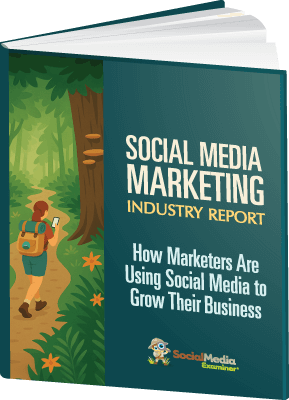Are you looking for ways to leverage AI that go beyond basic text generation? Wondering how to turn mountains of content and notes into actionable insights and marketing materials without spending countless hours reading and analyzing?
Unlike ChatGPT or Claude, NotebookLM doesn’t pull from the internet. It pulls from your documents, your files, and your links. And with support for images, audio, PDFs, and more, it's more than a smart assistant—it’s an extension of your strategic thinking.
This article breaks down five strategic ways to start using NotebookLM today: from competitive research and case study creation to historical content audits, deep-dive research synthesis, and even engaging internal training.
If you’re curious about AI but need practical, private, and business-focused tools, this guide will show you how to transform passive content into strategic assets with less overwhelm and more impact.

Why Does NotebookLM Matter for Marketers and Entrepreneurs in 2025
NotebookLM represents a significant evolution in how business professionals can interact with their content and data. Unlike traditional AI tools that draw from vast internet databases, NotebookLM creates what AI educator Jen Lehner calls “a private, large language AI model” that works exclusively with the information you feed into it.
The accessibility factor alone makes NotebookLM compelling for businesses of all sizes. Even the free version offers robust functionality that rivals premium AI tools. Since Google owns and continuously develops the platform, users can expect regular improvements and long-term stability. The fact that Google also owns YouTube hints at future integrations that could expand the platform's capabilities even further.
What sets NotebookLM apart is its ability to handle diverse content formats within a single workspace. Users can combine YouTube links, MP3 audio files, PDFs, text documents, images in PNG and JPEG formats, website links, Google Drive documents, and even web search results. This multimodal approach allows for comprehensive analysis that would be difficult to achieve with other AI tools.
The platform's unique approach to content isolation provides another crucial advantage. Unlike ChatGPT or Claude, which may reference their training data, NotebookLM works exclusively with your uploaded sources. You can select and deselect specific content with simple clicks, ensuring your analysis focuses precisely on the materials you want to examine. Additionally, your content doesn't train the underlying model, providing an extra layer of privacy and control.
For marketers and entrepreneurs, this translates into the ability to create highly targeted analyses, develop comprehensive case studies, and synthesize complex research without the noise and potential inaccuracies that can come from broader AI models drawing on internet-wide data.
Getting Started with NotebookLM: Features and Navigation
NotebookLM's user-friendly interface makes getting started remarkably straightforward, even for those new to AI tools.
Upon arriving at the platform, users encounter a prominent Get Started with NotebookLM button, followed by an equally visible Create Notebook option. This intuitive design reflects Google's commitment to making the tool accessible to users regardless of their technical background.
The real power becomes apparent when adding resources to your notebook. The free plan accommodates up to fifty resources per notebook, which provides substantial capacity for most business applications. Users with Google Workspace automatically gain access to the pro version, which expands capacity to an impressive three hundred sources per notebook. This generous allocation means that even complex, multi-faceted projects can be handled within a single workspace.
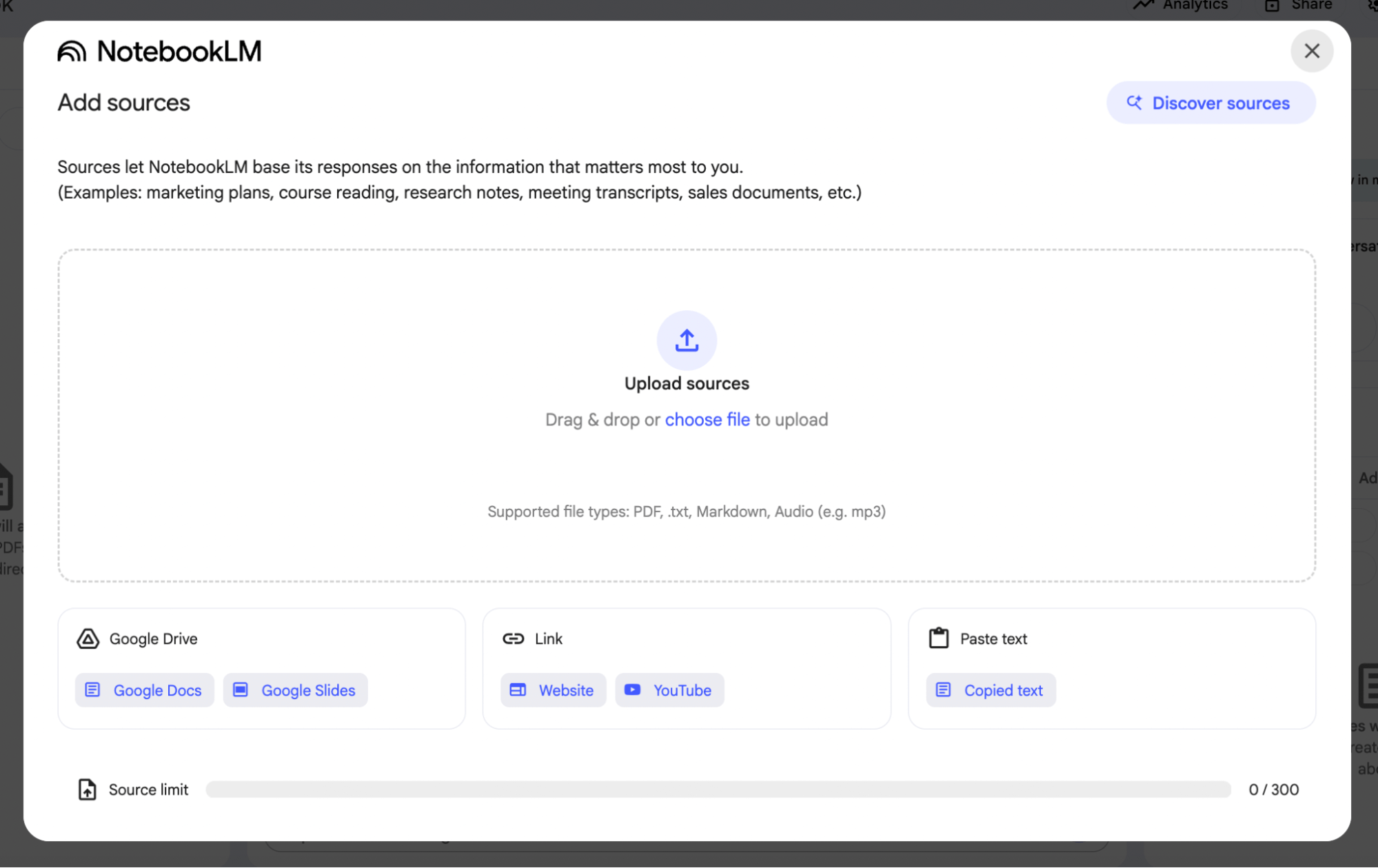
The platform accepts an extensive range of content types, making it useful for a variety of business applications. Users can upload images in JPEG or PNG formats, PDF documents, and YouTube links from any channel, not just their own content. Some restrictions apply to private or unlisted videos, but most publicly available content integrates seamlessly. Website links work reliably within NotebookLM, addressing a common frustration with other AI platforms that often cannot access linked content.
Audio file support through MP3 uploads allows podcasters to upload their shows without pre-transcription, and business professionals can include recorded meetings, interviews, or training sessions. The recently added Discover Sources feature further expands research capabilities by allowing users to search the web and add relevant results directly to their notebooks.
Ready to Supercharge Your Marketing Strategy?

Get expert training and an unbeatable conference experience when you attend Social Media Marketing World—from your friends at Social Media Examiner.
Broaden your reach, skyrocket your engagement, and grow your sales. Become the marketing hero your company or clients need!
🔥 Save $800 on an All-Access ticket. Sale Ends Friday! 🔥
GET THE DETAILSOnce sources are added, NotebookLM immediately begins processing the content. Users see an automatically generated summary in the center of their dashboard, while all uploaded sources appear along the left-hand side for easy reference and management. The ability to check and uncheck sources means users can quickly focus their analysis on specific subsets of their uploaded materials.
The platform includes several specialized features that enhance its utility for business applications:
- The mind map feature creates visual representations of content relationships.
- The briefing document function can condense lengthy materials for use in other AI platforms when context limits become a concern.
- Users can create notes from any source and add those notes back as additional sources, creating recursive analysis capabilities.
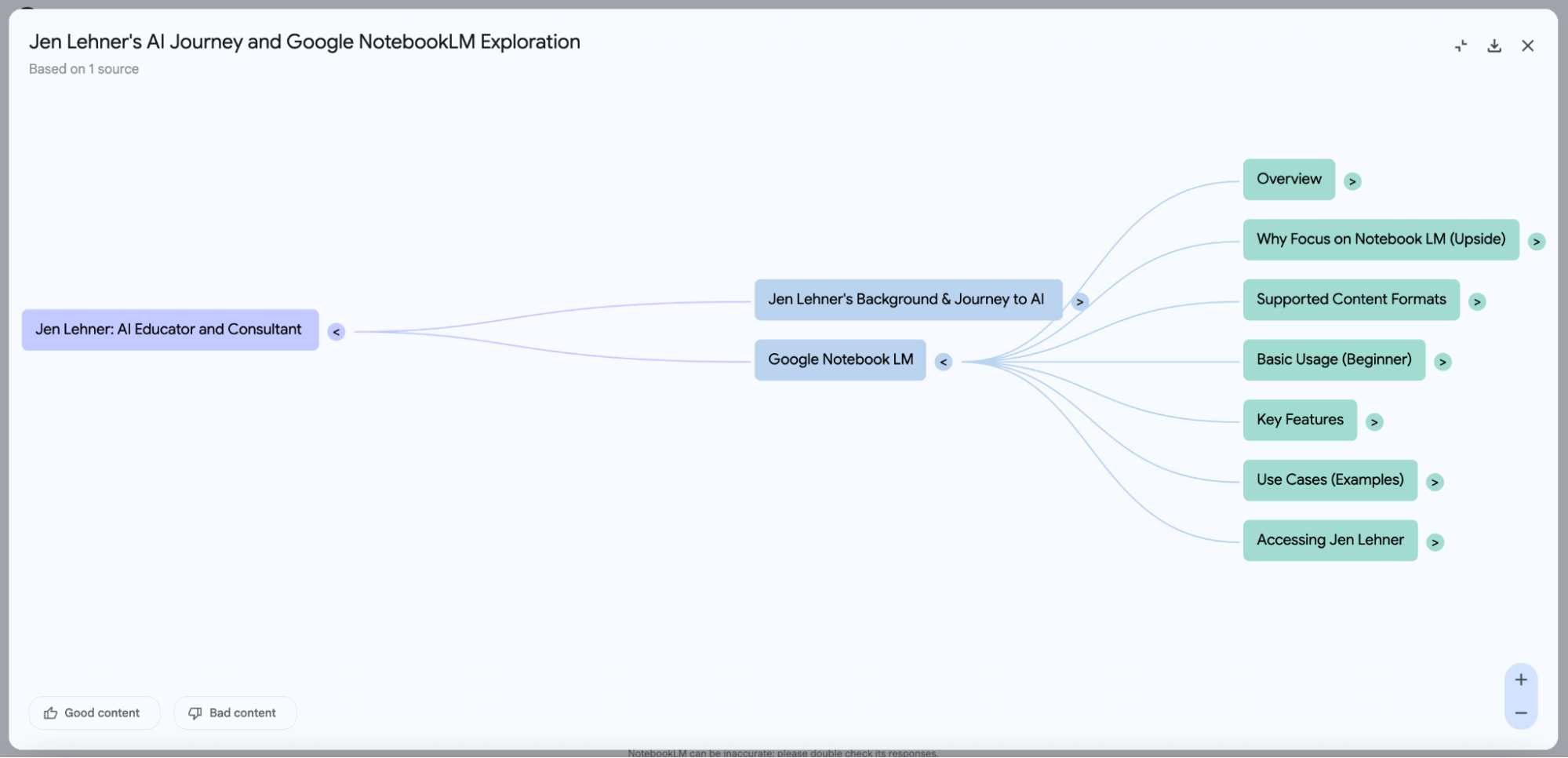
The standard chat window operates similarly to other AI platforms, allowing users to query their content using natural language. Additional features include study guide generation, FAQ creation from any content, timeline visualization for chronological materials, and the standout audio overview feature that creates podcast-style discussions from uploaded content.
#1: Use NotebookLM for Competitive Analysis That Reveals Hidden Opportunities
Traditional competitive analysis often involves hours of manual research, reading through competitors' content, and trying to identify patterns or gaps. NotebookLM transforms this process by enabling comprehensive analysis of competitors' audio and video content, areas where traditional AI tools often struggle.
The power of this approach becomes clear when examining actual content rather than just surface-level website information. While tools like ChatGPT or Claude can analyze a competitor's website when given a link, they struggle with deeper content analysis, particularly audio and video materials that contain the most valuable insights into competitors' strategies and messaging.
Jen Lehner demonstrated this capability by uploading approximately fifty podcast episodes from the AI Explored podcast into a NotebookLM workspace. She then queried the system to identify content gaps and opportunities for differentiation. The analysis revealed topics that hadn't been covered by past guests, and suggested areas where she could go deeper or take different approaches to familiar subjects.
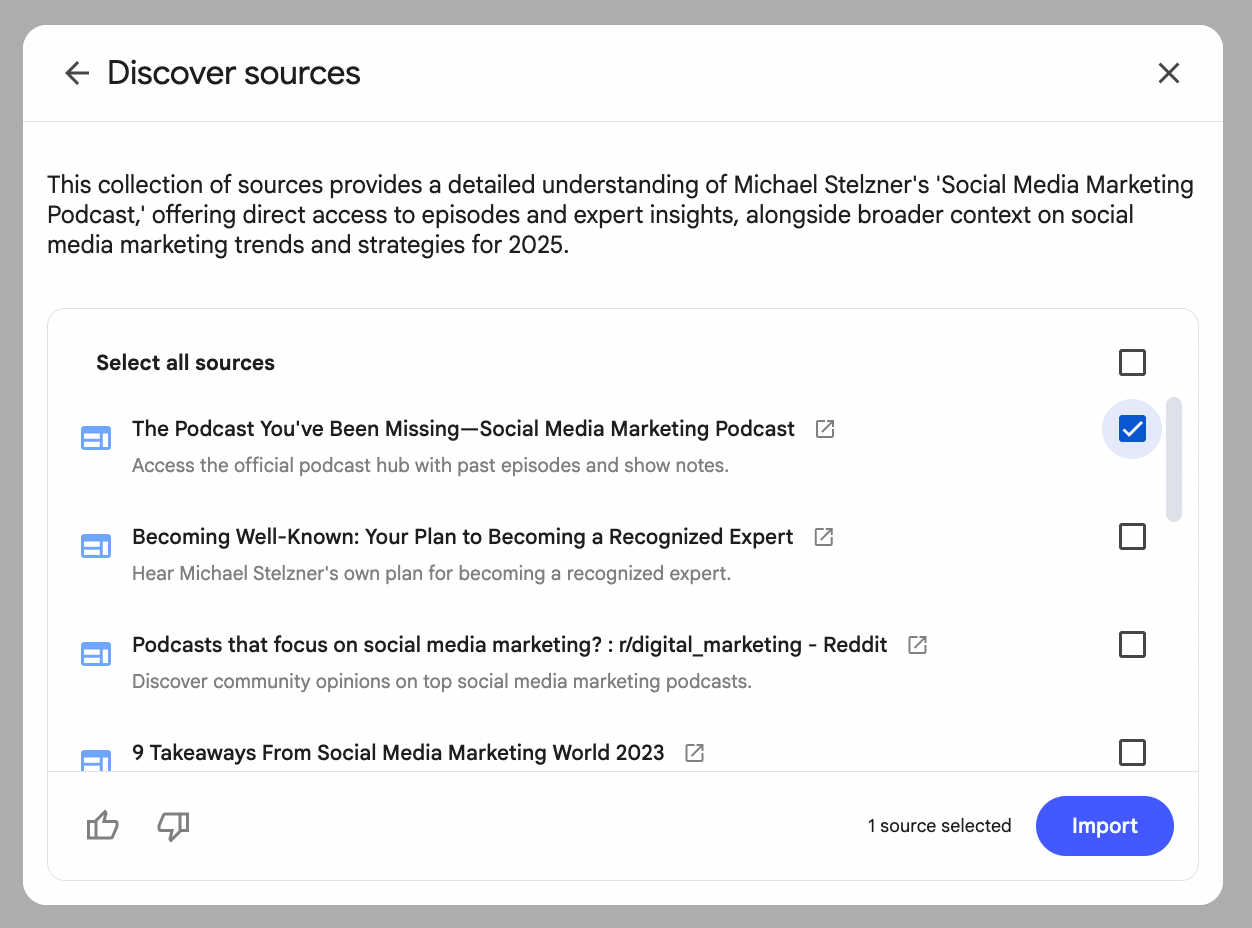
This type of analysis extends far beyond podcast content. Marketers can upload their favorite YouTuber's most successful videos on specific topics and ask NotebookLM to reverse-engineer the patterns that make those videos effective. The analysis might reveal hooks, transitions, storytelling techniques, or structural elements that contribute to the content's success.
The key to effective competitive analysis lies in asking the right questions. Rather than starting with complex, highly specific prompts, Lehner recommends beginning with broad queries that allow the AI to surprise you with insights. For example, when analyzing a successful content creator's videos, she suggests starting with a general prompt like:
This is one of the most successful YouTubers out there. I know there's definitely a pattern in the way that he's constructing his videos. Find the pattern and let me know what it is.
The tool Apify plays a crucial supporting role in this process, particularly when analyzing large volumes of content. Apify enables users to efficiently gather multiple YouTube links or other content sources in bulk, significantly reducing the manual work required to populate a NotebookLM workspace with comprehensive competitive data.
The applications for businesses considering this approach extend beyond individual content creators to include competitive conference analysis, speaker lineup comparison, or industry trend identification. By uploading content from multiple competitors within a specific niche, businesses can identify market gaps, understand positioning strategies, and develop differentiation approaches based on comprehensive data rather than surface-level observations.
#2: Use NotebookLM to Create Compelling Case Studies from Raw Materials
Case studies represent one of the most powerful marketing tools available to businesses. Yet, they often remain underutilized due to the time and effort required to create compelling narratives from project data. NotebookLM's audio overview feature transforms this challenge by automatically creating engaging story arcs from seemingly dry project materials.
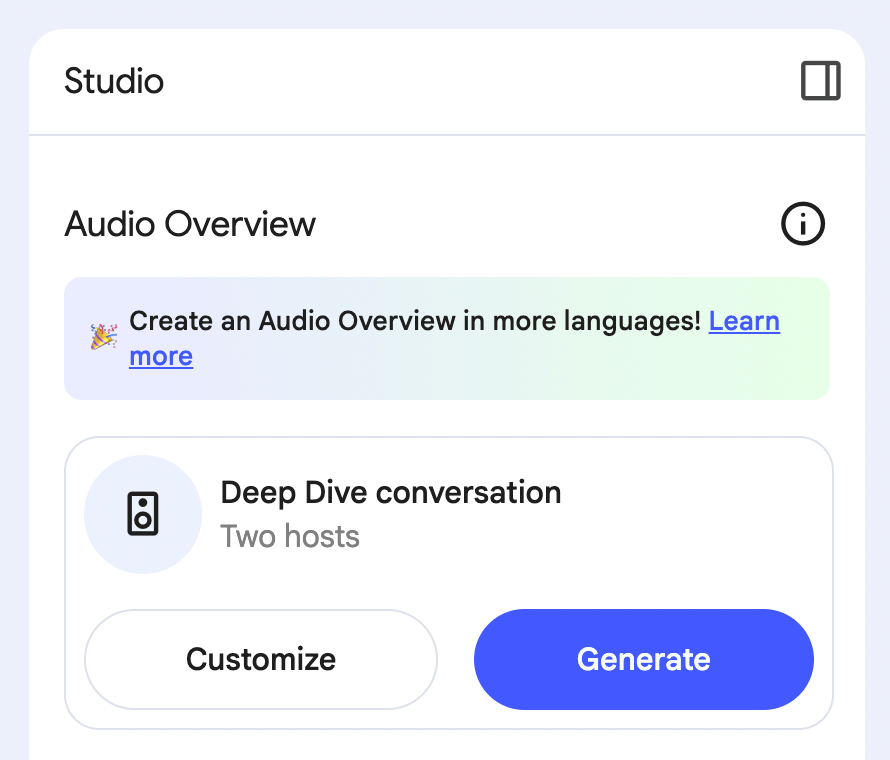
Traditional case studies tend to read like data dumps, presenting facts and figures without the narrative structure that makes information memorable and persuasive. The psychological principle that stories sell better than statistics becomes particularly relevant here, as prospects connect more deeply with narratives that demonstrate transformation and results.
Lehner's work with digital strategist Sandra Scaiano illustrates the practical application of this approach. Scaiano offers comprehensive digital business packages that can cost upwards of thirty thousand dollars, making compelling case studies essential for prospect conversion. The challenge lay in transforming technical project details into narratives that would resonate with potential clients.
The process begins with gathering comprehensive project materials, with messier being better according to Lehner's experience. The collection included screenshots of positive client social media posts, email exchanges between Scaiano and her client throughout the project, rough audio overviews of the work performed, handwritten notes, and any other documentation that captured the project's progression and outcomes.
These diverse materials were uploaded into a single NotebookLM workspace, creating a comprehensive repository of project information. The platform's ability to handle multiple content types proves crucial here, as the most compelling case study elements often exist in various formats rather than formal documentation.
The audio overview feature then works its magic, creating what Lehner describes as two robots with remarkably natural-sounding male and female voices. These AI hosts engage in fourteen-minute conversations that automatically create story arcs from the uploaded materials. The resulting discussions sound genuinely human, complete with natural speech patterns, enthusiasm, and even occasional sarcasm or snark that keep listeners engaged.
The transformation from dry project data to a compelling case study narrative represents the feature's greatest strength. Even highly technical SEO projects, which Lehner describes as potentially the most boring content imaginable, become engaging stories that hold attention for the full duration. The AI hosts naturally identify dramatic moments, transformation points, and client success stories that might be buried in technical documentation.
This audio content becomes the foundation for multi-format case study campaigns. The fourteen-minute discussion can be transcribed using tools like Whisper, providing source material for written case studies. The transcript can then be processed through platforms like HeyGen to create video presentations, though Lehner notes this technology still needs refinement for professional use.
AI Is No Longer Optional for Marketers—Ready to Master It?
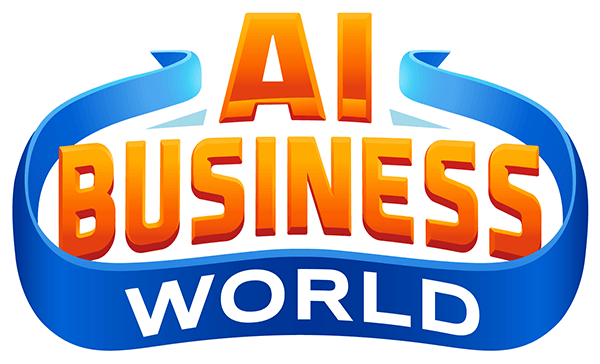
Join over a thousand forward-thinking marketers at AI Business World—a conference-in-a-conference at Social Media Marketing World.
Get two days of practical AI training where you'll discover:
✅ Systems that 3x your output—leaving time for strategy and creativity
✅ Proven strategies you can deploy right away—no guesswork, no wasted budget
Become the indispensable AI expert your company needs.
GET YOUR TICKETS—SAVE $300More successfully, the audio content can be transformed into interactive case studies using platforms like GenSpark, Canvas AI, Lovable, or Gamma. Each platform offers different presentation styles, allowing businesses to create multiple versions of the same case study optimized for different audiences or distribution channels.
By starting with the AI-generated narrative structure, businesses ensure their case studies follow proven storytelling principles while maintaining factual accuracy. The natural conversation format makes complex technical concepts more accessible to prospects who might struggle with traditional case study presentations.
For businesses implementing this approach, the key lies in comprehensive material collection. Rather than trying to create polished input materials, the focus should be on gathering authentic project artifacts that tell the complete story of client transformation and business results.
#3: Use NotebookLM to Perform a Comprehensive Content Audit Through Historical Analysis
Content auditing traditionally requires extensive manual review, making it difficult for businesses to maintain consistent messaging as their content libraries grow. NotebookLM enables comprehensive analysis of years' worth of content, revealing patterns, gaps, and contradictions that might otherwise go unnoticed.
Lehner's preparation for her hundredth podcast episode demonstrates the practical power of this approach. Rather than manually reviewing ninety-nine episodes to identify themes and select the most valuable content, she leveraged NotebookLM to analyze her entire podcast archive and identify compelling patterns for a compilation episode.
The process began with uploading MP3 files of episodes featuring high-profile guests, including Gary Vaynerchuk, James Altucher, Seth Godin, Greg McKeown, and Mike Michalowicz. Amazon S3 links provided direct access to the audio content, allowing NotebookLM to analyze the actual conversations rather than just show notes or descriptions.
The analysis started with a broad query asking the system to identify themes that emerged across these high-value episodes. Without requiring specific direction or complex prompting, NotebookLM returned three compelling theme options that could serve as the foundation for a roundup episode. This automated theme identification saved hours of manual review while ensuring objective analysis based on actual content rather than subjective memory.
Once Lehner selected her preferred theme, she requested a detailed extraction table with three specific columns: episode numbers, exact transcript quotes supporting the theme, and precise timestamps for each selected segment. This granular approach provided everything needed for professional audio editing while maintaining accuracy and efficiency.
The integration with Manus, an AI agent platform, demonstrates how NotebookLM analysis can drive automated execution. By providing Manus with the detailed extraction table and the same Amazon S3 links, Lehner was able to automate the audio editing process. The AI agent created a twelve-minute compilation file with precise cuts based on the timestamp specifications, effectively completing the technical production work without human intervention.
This workflow showcases a crucial principle: starting with comprehensive analysis in NotebookLM and then using that structured output to drive automation in specialized tools. The accuracy of both the theme identification and timestamp extraction proved remarkably high, with minimal manual correction required.
Businesses can apply similar approaches to blog post archives, video content libraries, email marketing campaigns, or social media content. By analyzing historical content, companies can identify messaging evolution, spot inconsistencies, and discover successful patterns that should be replicated.
For content-heavy businesses, this type of audit can reveal valuable insights about audience preferences, topic performance, and messaging effectiveness across different time periods. The ability to process both text and audio content within the same analysis provides a more complete picture than traditional content auditing methods.
The potential for automation becomes particularly valuable for businesses managing large content libraries. Rather than treating content audits as occasional major projects, companies can establish regular analysis workflows that provide ongoing insights into their content performance and messaging consistency.
#4: Research Synthesis for Deep Learning and Understanding
Research synthesis traditionally requires reading multiple sources, taking notes, and mentally connecting insights across different materials. NotebookLM's audio overview feature transforms this process by creating engaging discussions that naturally weave together insights from multiple sources, making complex research more accessible and memorable.
Lehner's personal research routine illustrates the practical value of this approach. As someone who must stay current with rapidly evolving AI developments, she faces the challenge of processing substantial amounts of technical information without spending entire days reading at her desk. Her solution involves creating personalized podcasts using NotebookLM's AI hosts.
The process begins with comprehensive source gathering, taking advantage of NotebookLM's ability to handle diverse content types. Research materials might include white papers, academic studies, industry reports, book chapters, blog posts, YouTube videos, and website links. The platform's capacity for up to fifty sources in the free version, or three hundred with Google Workspace, allows for thorough topic coverage within a single workspace.
Once materials are uploaded, the audio overview feature creates natural conversations between the AI hosts that synthesize key insights across all sources. These discussions automatically identify connections between materials, highlight contradictory viewpoints, and present complex concepts in accessible language. The hosts' natural speech patterns and conversational style make even dense technical content engaging enough for passive consumption during activities like bathing, walking, or commuting.
The quality of these AI-generated discussions has improved dramatically over recent months. Earlier versions included excessive small talk and banter that felt unnecessary. Current iterations focus more directly on substantive content while maintaining the conversational tone that makes the information memorable and engaging.
One particularly valuable application involves conference preparation. When Lehner discovered the night before attending a conference that she was unfamiliar with the keynote speaker's work, she uploaded his book to NotebookLM and requested an audio discussion. The resulting conversation provided a comprehensive understanding of the book's key concepts, enabling informed discussion the following day despite not having time for traditional reading.
This approach proves especially valuable for audio learners who process information more effectively through listening than reading. The conversational format naturally includes repetition, examples, and different perspectives on the same concepts, reinforcing understanding in ways that traditional reading might not achieve.
The interactive capability adds another dimension to the research process. Users can interrupt the AI hosts during their discussion to ask clarifying questions or request deeper exploration of specific points. While the written documentation doesn't capture these interruptions, the real-time interaction allows for dynamic research exploration based on emerging questions or interests.
For business applications, research synthesis becomes particularly valuable when evaluating market opportunities, understanding competitive landscapes, or exploring new strategic directions. Rather than requiring team members to review extensive research materials individually, businesses can create shared audio discussions that ensure consistent understanding across teams while significantly reducing the time investment required from each participant.
The platform's source selection feature enables focused analysis by allowing users to check and uncheck specific materials during their research. A single workspace can contain comprehensive research materials, enabling targeted discussions on specific subtopics or perspectives.
#5: Use NotebookLM for Internal Training That Engages Your Team
Traditional employee training often relies on dense written materials, lengthy video presentations, or dry standard operating procedures that fail to engage learners effectively. NotebookLM's audio feature transforms internal training by converting static documentation into dynamic conversations that team members can consume during commutes, exercise, or other activities.
The concept builds on the same principles that make the research synthesis feature valuable: converting written information into engaging audio content that feels more like listening to a podcast than studying training materials. This approach particularly benefits teams with diverse learning preferences and busy schedules, making traditional training sessions challenging to coordinate.
The process begins with comprehensive documentation gathering, similar to creating case studies but focused on internal processes rather than client work. Training materials might include standard operating procedures, process documentation, training videos, policy documents, workflow diagrams, and examples of completed work. The platform's multimodal capabilities mean visual elements like diagrams or screenshots can be included alongside text-based materials.
Once uploaded to NotebookLM, the audio overview feature creates natural discussions between the AI hosts that walk through procedures, explain complex processes, and highlight important considerations. The conversational format naturally includes examples, clarifications, and different perspectives on the same processes, making the information more memorable than traditional documentation.
For businesses implementing this approach, the flexibility becomes particularly valuable. New team members can listen to training materials during their commute, experienced employees can refresh their knowledge while exercising, and managers can review processes while multitasking. This accessibility increases the likelihood that training materials will be consumed and retained.
The audio format also enables more frequent training updates. Rather than requiring formal training sessions or expecting employees to read through updated documentation, businesses can create updated audio discussions whenever processes change. Team members can listen to these updates during convenient times, ensuring broader adoption of new procedures.
Customer-facing businesses can extend this approach to customer training within membership programs or product onboarding processes. Complex software features, service procedures, or product usage guidelines become more accessible when presented as engaging audio discussions rather than traditional documentation.
The natural conversation format helps address common training challenges like information retention and practical application. The AI hosts naturally include context, explain reasoning behind procedures, and present information in logical sequences that support understanding rather than mere memorization.
For teams working remotely or across different time zones, audio training materials provide consistency that live training sessions cannot match. Every team member receives identical information presented in the same engaging format, reducing the variability that can occur with human-delivered training sessions.
The integration possibilities with other business systems further enhance the value proposition. Training audio files can be easily distributed through existing communication platforms, integrated into onboarding workflows, or made available through internal knowledge management systems.
Implementing this approach requires thoughtful consideration of existing training materials and identifying processes that would benefit from more engaging presentation formats. The most successful applications typically focus on complex procedures requiring deep understanding rather than simple task lists better suited to traditional documentation formats.
Jen Lehner is an AI educator and consultant who helps entrepreneurs and marketers save time and money with AI. She’s the founder of The Front Row AI Club, a membership that helps entrepreneurs master AI, and the host of The Front Row Podcast for Entrepreneurs. Follow her on Instagram.
Other Notes From This Episode
- Connect with Michael Stelzner @Stelzner on Facebook and @Mike_Stelzner on X.
- Watch this interview and other exclusive content from Social Media Examiner on YouTube.
Listen to the Podcast Now
This article is sourced from the AI Explored podcast. Listen or subscribe below.
Where to subscribe: Apple Podcasts | Spotify | YouTube Music | YouTube | Amazon Music | RSS
✋🏽 If you enjoyed this episode of the AI Explored podcast, please head over to Apple Podcasts, leave a rating, write a review, and subscribe.
Stay Up-to-Date: Get New Marketing Articles Delivered to You!
Don't miss out on upcoming social media marketing insights and strategies! Sign up to receive notifications when we publish new articles on Social Media Examiner. Our expertly crafted content will help you stay ahead of the curve and drive results for your business. Click the link below to sign up now and receive our annual report!

Want to Unlock AI Marketing Breakthroughs?
If you’re like most of us, you are trying to figure out how to use AI in your marketing. Here's the solution: The AI Business Society—from your friends at Social Media Examiner.The AI Business Society is the place to discover how to apply AI in your work. When you join, you'll boost your productivity, unlock your creativity, and make connections with other marketers on a similar journey.
I'M READY TO BECOME AN AI-POWERED MARKETER